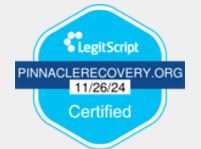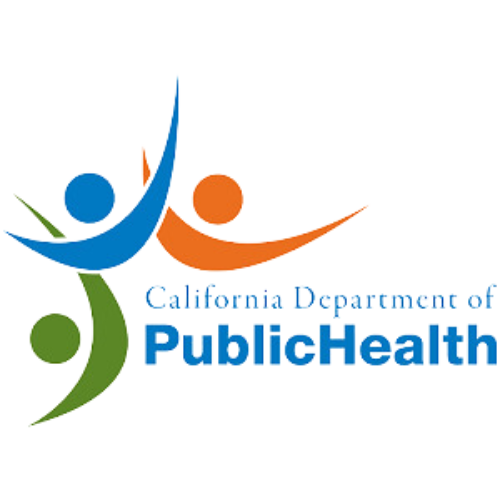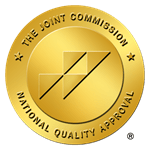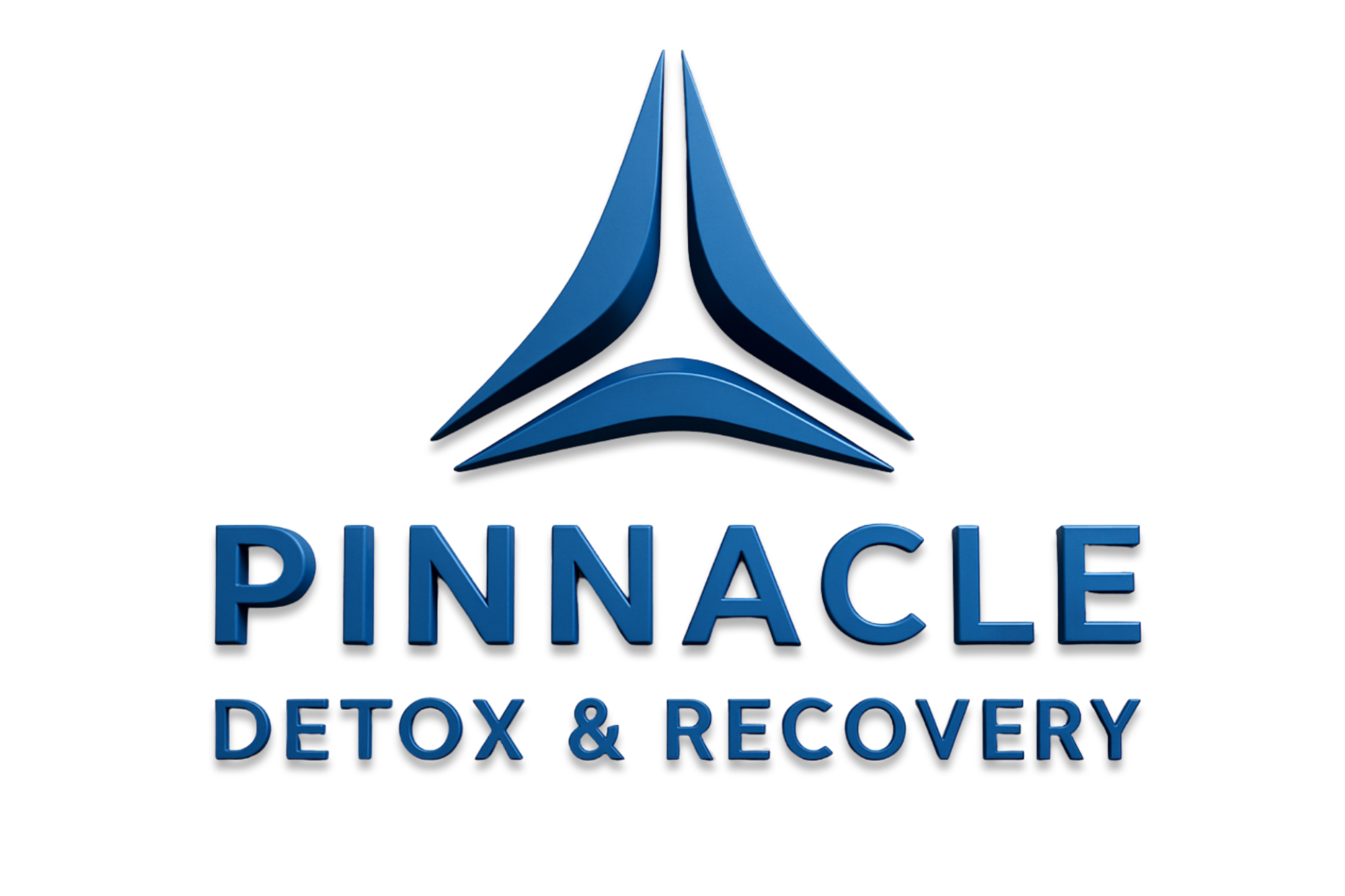Building
long-term sobriety requires three proven support strategies you can count on. Initially, engage your family through
structured meetings and ongoing guidance to create a strong foundation. Second, connect with community prevention programs that offer
peer support and skill-building opportunities. Third, participate in
evidence-based programs that develop your social and emotional skills, like stress management and resistance training. These strategies work together to strengthen your path toward lasting recovery and wellness.
Understanding the Core Elements of Drug Prevention
While
drug prevention efforts have evolved markedly over the decades,
successful programs consistently share several
core elements that work together to create lasting impact. At the heart of effective prevention lies a thorough approach that integrates multiple components across schools, communities, and healthcare settings.
You'll find that the most successful programs combine
education with targeted media campaigns, fostering resistance to drug use through
interactive skill-building sessions. These initiatives require ongoing staff development and long-term measurement to confirm they're meeting community needs. Developing
healthy relationships with supportive peers is crucial for maintaining long-term sobriety. Expanding beyond the traditional biomedical model, modern prevention approaches recognize that
social determinants play a crucial role in substance use patterns. By focusing on
critical life skills like decision-making and refusal techniques, while incorporating cultural sensitivity, these programs create a foundation for sustained sobriety. The key is delivering consistent messaging through diverse channels, reinforced by supportive relationships and
community policies that promote drug-free environments.
The implementation of comprehensive prevention interventions often involves
multiple stakeholders working together to evaluate and strengthen community-based programs.
Building Strong Family Support Networks
A strong
family support network serves as the bedrock of successful
long-term sobriety and
drug abuse prevention. Through
holistic family engagement, you'll create an environment of open communication, trust, and mutual understanding that drastically reduces the risk of substance use.
Multi-generational prevention approaches work best when you combine regular family meetings, professional guidance, and systematic support systems. Research shows that
family-based treatment models consistently outperform other approaches in improving outcomes. These interventions can effectively reduce
sexual risk behaviors among youth while supporting mental health. Parents who achieve
90+ days in treatment are significantly more likely to maintain family unity. You'll want to focus on establishing clear expectations, monitoring progress, and addressing concerns early through consistent dialogue.
Family-based interventions, including parent training and group sessions, have proven highly effective across numerous studies.
Consider implementing structured family meetings and participating in
evidence-based programs that strengthen attachment and bonding. Your success rate improves tremendously when you engage the
entire family unit in recovery support, rather than focusing solely on individual treatment.
Countless studies demonstrate that fostering
healthy community connections plays a pivotal role in long-term sobriety and substance abuse prevention. You'll find strength in cultivating neighborhood partnerships through local prevention coalitions, which have shown remarkable success in reducing
substance use among youth. Communities with
higher prevention capacity demonstrate significantly lower rates of alcohol, tobacco and other substance use among students. Research shows that
teen drug use is not an inevitable outcome when communities work together effectively. These community efforts have mobilized
44,000 community members to participate in prevention initiatives across rural, suburban, and urban areas.
Implementing School-Based Prevention Programs
Building
effective drug prevention programs in schools requires starting with
proven social skills training during the formative years. Programs that include
motivational booster sessions show overall reductions in substance use outcomes. You'll find that interactive learning approaches, like those used in
Life Skills Training, lead to notably better outcomes with up to 44% lower substance use rates compared to traditional methods. Most
evidence-based programs cost $1,000-$5,000 to implement in schools. When you implement
evidence-based programs that emphasize resistance skills and personal development, rather than just information sharing, you're setting students up for long-term success in avoiding substance abuse.
Building Social Skills Early
Successful
school-based prevention programs demonstrate that early
social skills development plays a pivotal role in reducing substance abuse among youth. By developing
emotional regulation and fostering
conflict resolution through targeted interventions, you'll help young people build
essential life skills that serve as
protective factors against drug use. Programs like
Reasoning and Rehabilitation have been successfully implemented in over 26 countries, showing the global effectiveness of this approach.
Research shows these key benefits of early social skills training:
- Increases refusal skills and assertiveness to resist peer pressure
- Improves problem-solving and decision-making abilities
- Strengthens social and emotional competencies
- Amplifies impulse control through cognitive training
- Lowers the likelihood of substance use initiation
This approach is particularly impactful for students who may be struggling academically or feeling disconnected. Studies indicate that
school-based prevention efforts show modest but consistent beneficial effects on reducing later drug use, especially for marijuana and other substances. When you focus on building these foundational skills early, you're providing youth with tools that can lead to a 50% or greater reduction in substance use behaviors.
Interactive Learning Shows Results
Interactive teaching methods consistently deliver
superior outcomes in school-based drug prevention programs. When you engage students through
skill building techniques and
behavioral modification approaches, rather than
traditional lectures, you'll see measurable reductions in substance use, often up to 50% lower rates among participants.
Programs like Life Skills Training (LST) demonstrate this effectiveness, showing 44% lower drug use rates that persist for up to six years after completion.
Professional development training for teachers is crucial for maintaining high-quality program delivery. You'll achieve the best results by incorporating multiple components: classroom activities, community involvement, and extracurricular engagement. The key is maintaining program consistency while delivering content through engaging formats like sports, volunteering, and group projects. This all-encompassing approach strengthens students'
social-emotional learning and
cognitive-behavioral skills, creating a more resilient foundation for long-term substance abuse prevention.
Creating Sustainable Treatment Access
When you're seeking
addiction treatment, having trustworthy access to care facilities and professional support can make a vital difference in your
recovery odyssey. You'll find the path simpler with expanded treatment networks that include both urban and rural locations, along with
financial assistance programs that help overcome cost barriers. Your local community can provide supplementary recovery resources through support groups, outreach programs, and partnerships with healthcare providers who understand
substance use disorders. With the emergence of more evidence-based approaches,
medication-assisted treatment has become increasingly available through private doctor's offices and outpatient facilities.
Expanding Treatment Network Access
Expanding access to
treatment networks represents an essential cornerstone in supporting long-term sobriety. Through diversifying provider models and embracing
telehealth utilization trends, you'll find more options than ever to maintain your recovery path.
- Government-owned facilities have expanded greatly, offering state-supported treatment options in many regions
- Nonprofit organizations now provide more free and low-cost care access points across multiple states
- For-profit providers have grown substantially in underserved areas, increasing overall treatment capacity
- Integrated care settings now address both mental and physical health needs in one location
- Outpatient and medication-assisted treatment options continue to expand, giving you flexible care choices
These improvements mean you're more likely to find appropriate care near you, whether through traditional facilities, telehealth services, or integrated healthcare settings that match your specific needs.
Financial Barriers To Care
Financial barriers remain one of the most challenging obstacles in accessing
addiction treatment, even as treatment networks expand. You'll find that even with insurance coverage,
out-of-pocket expenses for medications, counseling, and frequent appointments can quickly become overwhelming.
Lost wages from time spent in treatment programs further compound these challenges, especially if you're working with limited income.
Consider exploring
financial coaching programs that can help you navigate insurance options and payment plans. If you're employed, ask about
employer sponsored treatment benefits, as many companies now offer confidential assistance programs. Don't overlook
Medicaid coverage, though be aware that state-specific restrictions may apply. Understanding your options early can help prevent treatment interruptions and reduce the stress of managing both recovery and financial obligations.
Three key pillars of
community-based recovery support can provide
sustainable pathways to long-term sobriety: Recovery Community Centers (RCCs), Collegiate Recovery Programs (CRPs), and peer support networks. These community-based aftercare models deliver
essential support for long term relapse prevention through accessible,
evidence-based resources.
- RCCs serve up to 500 people annually, offering both service provision and social connection
- CRPs demonstrate impressive success with only 8% average relapse rates and higher graduation rates
- Peer support groups provide free or low-cost ongoing accountability and encouragement
- Integration with professional treatment services creates an extensive care continuum
- These resources particularly benefit underserved populations, including youth and minorities
You'll find these community supports instrumental in maintaining sobriety while building meaningful connections that sustain your recovery path.
Developing Personal Resilience Skills
Building personal resilience stands out as a cornerstone of long-term sobriety success. By cultivating self-compassion and fostering intrinsic motivation, you'll develop the inner strength needed to navigate recovery challenges. Mindfulness practices and goal-setting strategies work together to bolster your emotional regulation and decision-making abilities.
| Resilience Skill |
Recovery Benefit |
| Mindfulness Practice |
Reduces stress, prevents relapse |
| Goal Achievement |
Builds confidence, maintains motivation |
| Emotional Regulation |
Decreases cravings, improves relationships |
| Growth Mindset |
Transforms setbacks into learning opportunities |
Establishing Peer Support Systems
While
personal determination plays an indispensable role in recovery, establishing strong
peer support networks dramatically increases your chances of maintaining
long-term sobriety. Through
behavioral health integration and
peer-led recovery coaching, you'll connect with others who understand your initial steps firsthand, creating a foundation of
mutual accountability and understanding.
Building a strong peer network offers vital support and accountability, empowering you to maintain sobriety through shared understanding and guidance.
- Join support groups to combat isolation and build meaningful friendships with others in recovery
- Connect with peer mentors who can guide you through real-world challenges and share practical coping strategies
- Access community resources and treatment services through established peer networks
- Learn valuable life skills and relapse prevention techniques from those with lived experience
- Consider becoming a peer leader yourself once you're further along in your recovery path
These connections provide essential emotional support while helping you navigate the practical aspects of
sustained recovery.
Maximizing Evidence-Based Prevention Methods
To amplify your prevention program's impact, you'll want to focus on
evidence-backed strategies that combine
school-based curricula with
family support systems and
community resources. You can strengthen your approach by integrating proven methods like social skills training, coping mechanisms, and regular monitoring of outcomes through established success metrics. Building sustained community partnerships and ensuring cultural relevance will help create the expansive support network needed for long-term sobriety success.
Research-Driven Program Selection
Numerous research studies demonstrate that
evidence-based prevention programs considerably reduce substance use across different populations and settings. When selecting a
data-driven implementation strategy, you'll want to focus on programs with
proven track records and
evidence-based program adaptation potential.
- Universal school-based programs show up to 25% reduction in hard drug use and 22-50% decreases in marijuana use
- Hybrid digital formats boost accessibility while maintaining program effectiveness
- Prevention programs are most effective for alcohol reduction, with up to 10.3% of youth delaying or preventing use
- Males who were nonusers show vastly better outcomes, with a tenfold lower risk of marijuana initiation
- Digital platforms enable large-scale program adoption while requiring fewer resources and less classroom time
Choose programs that match your population's needs and have demonstrated positive outcomes through rigorous research.
Research consistently shows that
integrated community approaches offer the most effective path to
long-term sobriety and
substance abuse prevention. When empowered communities work together, they create an all-encompassing support system that adapts to diverse cultural contexts and individual needs.
Success depends on mobilizing
diverse stakeholders, from healthcare providers and law enforcement to families and peer support groups. You'll find that combining multiple
evidence-based models, like the Community Reinforcement Approach with traditional methods, considerably improves
recovery outcomes. This integrated strategy reduces stigma while increasing access to prevention resources and treatment options.
The key is ensuring sustained engagement through targeted outreach, public awareness campaigns, and education. By fostering collaborative partnerships and maintaining continuous community involvement, you'll help build a more effective, sustainable
recovery ecosystem for those seeking sobriety.
Long-Term Success Metrics
Effective measurement of
long-term sobriety success relies on exhaustive tracking across multiple
evidence-based metrics. Through broad outcome monitoring and
data-driven improvements, you'll find that programs focusing on
holistic recovery show the strongest results for
sustained sobriety.
- Completion and retention rates serve as primary indicators of program engagement, with higher rates linked to reduced relapse risk
- Mental and physical health improvements demonstrate the broader impact of recovery efforts
- Academic and work performance gains reflect successful community reintegration
- Reductions in substance use frequency and intensity provide concrete evidence of progress
- Satisfaction surveys and continuous feedback help programs adapt to your changing needs
These metrics work together to create a complete picture of your recovery path, allowing for targeted support and program refinements that amplify your chances of
long-term success.
Strengthening Socioeconomic Protective Factors
While
socioeconomic stability plays an indispensable role in preventing substance use disorders, you don't need wealth to build
protective factors against drug abuse. You can strengthen your resilience through targeted
skill development and
community resources that promote economic mobility.
Start by accessing free
financial education programs through local organizations, which can help you build money management skills and work in the direction of stability. Pursue
educational opportunities and
vocational training that match your interests; these pathways considerably decrease substance use risks while opening doors to stable employment. Take advantage of community support systems, including mentoring programs and after-school activities, which provide valuable social connections and skill-building opportunities. Remember, each step toward improving your socioeconomic situation, no matter how small, contributes to your long-term protection against substance use.
Integrating Multi-Level Prevention Strategies
Successful drug abuse prevention requires a
coordinated effort across
multiple levels of intervention, from
individual support to broader
community initiatives. You'll find that targeted interventions work best when they're integrated across
different social layers, creating a comprehensive support network for lasting sobriety.
- Connect with school-based programs that offer universal prevention education and specialized support for at-risk youth
- Engage in family-focused interventions that strengthen communication and parenting skills
- Participate in community initiatives that promote policy alignment between schools, healthcare, and local organizations
- Access mentoring and skill-building programs that enhance individual resilience
- Join support groups that provide culturally relevant resources and peer connections
This multi-tiered approach guarantees you're supported at every level while addressing both immediate needs and
long-term prevention goals.
Frequently Asked Questions
How Long Does It Typically Take to Develop Addiction After First Drug Use?
Time to addiction development varies considerably based on individual risk factors and the substance used. You'll find patterns of initial use typically start in adolescence, with addiction potentially developing within months to years. If you have a
family history of addiction or mental health issues, you're at
higher risk for quicker progression.
Some highly addictive drugs, like methamphetamine or opioid,s can lead to dependency after just a few uses.
What Role Do Genetics Play in Determining Vulnerability to Substance Abuse?
Your
genetic predisposition plays a significant role in determining your vulnerability to
substance abuse, accounting for about 50-60% of your risk factors. If you have family members with
addiction, you're more likely to develop substance use disorders due to shared genetic patterns affecting dopamine signaling and reward systems. Nonetheless, it is crucial to comprehend that genetics aren't destiny, environmental factors and personal choices still heavily influence whether you'll develop an addiction.
Can Alternative Therapies Like Acupuncture Help Prevent Substance Use Relapse?
Yes, acupuncture can help prevent
substance use relapse when combined with other treatments. You'll find it's most effective as part of an extensive recovery plan that includes
mindfulness practices and support group participation. Research shows acupuncture can
reduce your cravings, anxiety, and depression while improving emotional regulation. Though it shouldn't be your only treatment strategy, you'll likely experience better outcomes when you integrate acupuncture with
traditional therapies and behavioral interventions.
Are Certain Professions at Higher Risk for Developing Drug Addiction?
Yes, certain
high stress occupations put you at greater risk for developing
substance use disorders. If you work in construction, service jobs, mining, or transportation, you're statistically more likely to struggle with addiction. Mental health factors like workplace pressure, isolation, and irregular schedules can increase your vulnerability.
Creative and entertainment industries also show higher rates, often due to cultural influences. It is crucial to recognize these occupational risks and seek support when needed.
What Percentage of People Maintain Sobriety After Their First Recovery Attempt?
You'll find that approximately one-third (around 33%) of people maintain sobriety after their initial recovery attempt. The percentage of successful initial recovery attempts varies by substance type, with alcohol users showing slightly better early outcomes than opioid users.
Relapse rates after initial sobriety indicate that 40-60% of people will experience at least one setback. Don't be discouraged though, many people achieve
lasting recovery through
multiple attempts and ongoing support.
 While drug prevention efforts have evolved markedly over the decades, successful programs consistently share several core elements that work together to create lasting impact. At the heart of effective prevention lies a thorough approach that integrates multiple components across schools, communities, and healthcare settings.
You'll find that the most successful programs combine education with targeted media campaigns, fostering resistance to drug use through interactive skill-building sessions. These initiatives require ongoing staff development and long-term measurement to confirm they're meeting community needs. Developing healthy relationships with supportive peers is crucial for maintaining long-term sobriety. Expanding beyond the traditional biomedical model, modern prevention approaches recognize that social determinants play a crucial role in substance use patterns. By focusing on critical life skills like decision-making and refusal techniques, while incorporating cultural sensitivity, these programs create a foundation for sustained sobriety. The key is delivering consistent messaging through diverse channels, reinforced by supportive relationships and community policies that promote drug-free environments.
The implementation of comprehensive prevention interventions often involves multiple stakeholders working together to evaluate and strengthen community-based programs.
While drug prevention efforts have evolved markedly over the decades, successful programs consistently share several core elements that work together to create lasting impact. At the heart of effective prevention lies a thorough approach that integrates multiple components across schools, communities, and healthcare settings.
You'll find that the most successful programs combine education with targeted media campaigns, fostering resistance to drug use through interactive skill-building sessions. These initiatives require ongoing staff development and long-term measurement to confirm they're meeting community needs. Developing healthy relationships with supportive peers is crucial for maintaining long-term sobriety. Expanding beyond the traditional biomedical model, modern prevention approaches recognize that social determinants play a crucial role in substance use patterns. By focusing on critical life skills like decision-making and refusal techniques, while incorporating cultural sensitivity, these programs create a foundation for sustained sobriety. The key is delivering consistent messaging through diverse channels, reinforced by supportive relationships and community policies that promote drug-free environments.
The implementation of comprehensive prevention interventions often involves multiple stakeholders working together to evaluate and strengthen community-based programs.
 Countless studies demonstrate that fostering healthy community connections plays a pivotal role in long-term sobriety and substance abuse prevention. You'll find strength in cultivating neighborhood partnerships through local prevention coalitions, which have shown remarkable success in reducing substance use among youth. Communities with higher prevention capacity demonstrate significantly lower rates of alcohol, tobacco and other substance use among students. Research shows that teen drug use is not an inevitable outcome when communities work together effectively. These community efforts have mobilized 44,000 community members to participate in prevention initiatives across rural, suburban, and urban areas.
Countless studies demonstrate that fostering healthy community connections plays a pivotal role in long-term sobriety and substance abuse prevention. You'll find strength in cultivating neighborhood partnerships through local prevention coalitions, which have shown remarkable success in reducing substance use among youth. Communities with higher prevention capacity demonstrate significantly lower rates of alcohol, tobacco and other substance use among students. Research shows that teen drug use is not an inevitable outcome when communities work together effectively. These community efforts have mobilized 44,000 community members to participate in prevention initiatives across rural, suburban, and urban areas.
 When you're seeking addiction treatment, having trustworthy access to care facilities and professional support can make a vital difference in your recovery odyssey. You'll find the path simpler with expanded treatment networks that include both urban and rural locations, along with financial assistance programs that help overcome cost barriers. Your local community can provide supplementary recovery resources through support groups, outreach programs, and partnerships with healthcare providers who understand substance use disorders. With the emergence of more evidence-based approaches, medication-assisted treatment has become increasingly available through private doctor's offices and outpatient facilities.
When you're seeking addiction treatment, having trustworthy access to care facilities and professional support can make a vital difference in your recovery odyssey. You'll find the path simpler with expanded treatment networks that include both urban and rural locations, along with financial assistance programs that help overcome cost barriers. Your local community can provide supplementary recovery resources through support groups, outreach programs, and partnerships with healthcare providers who understand substance use disorders. With the emergence of more evidence-based approaches, medication-assisted treatment has become increasingly available through private doctor's offices and outpatient facilities.



